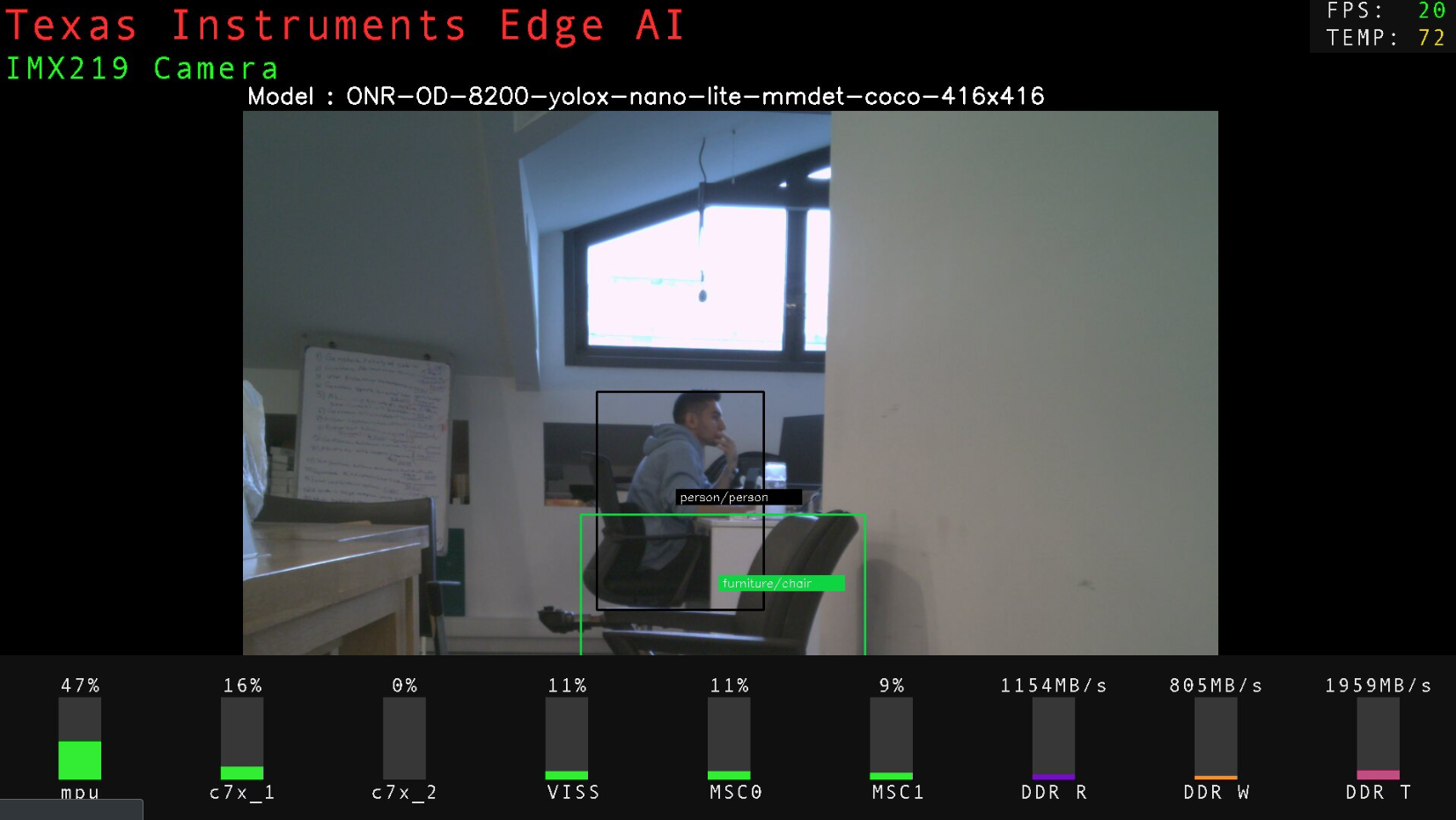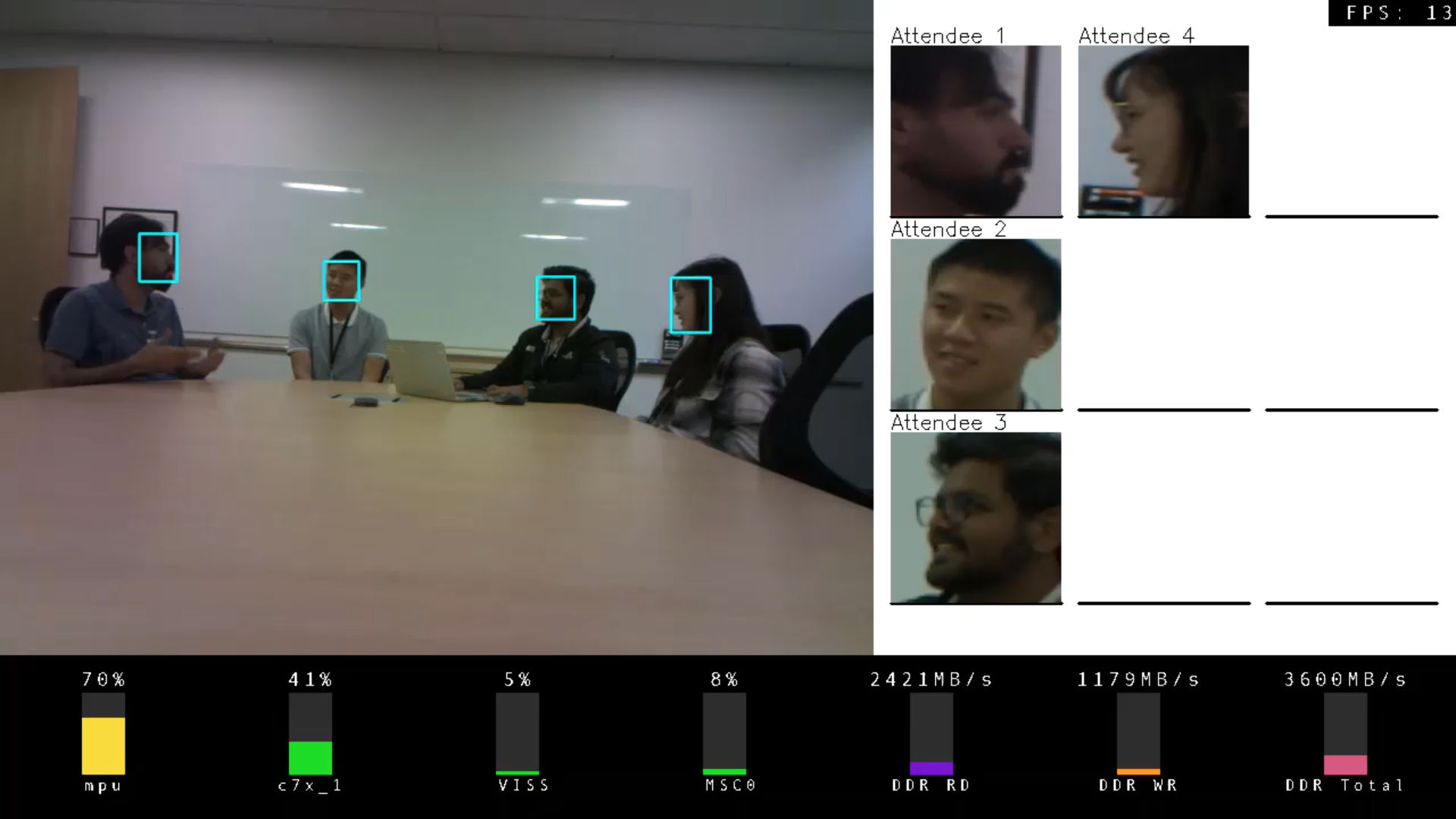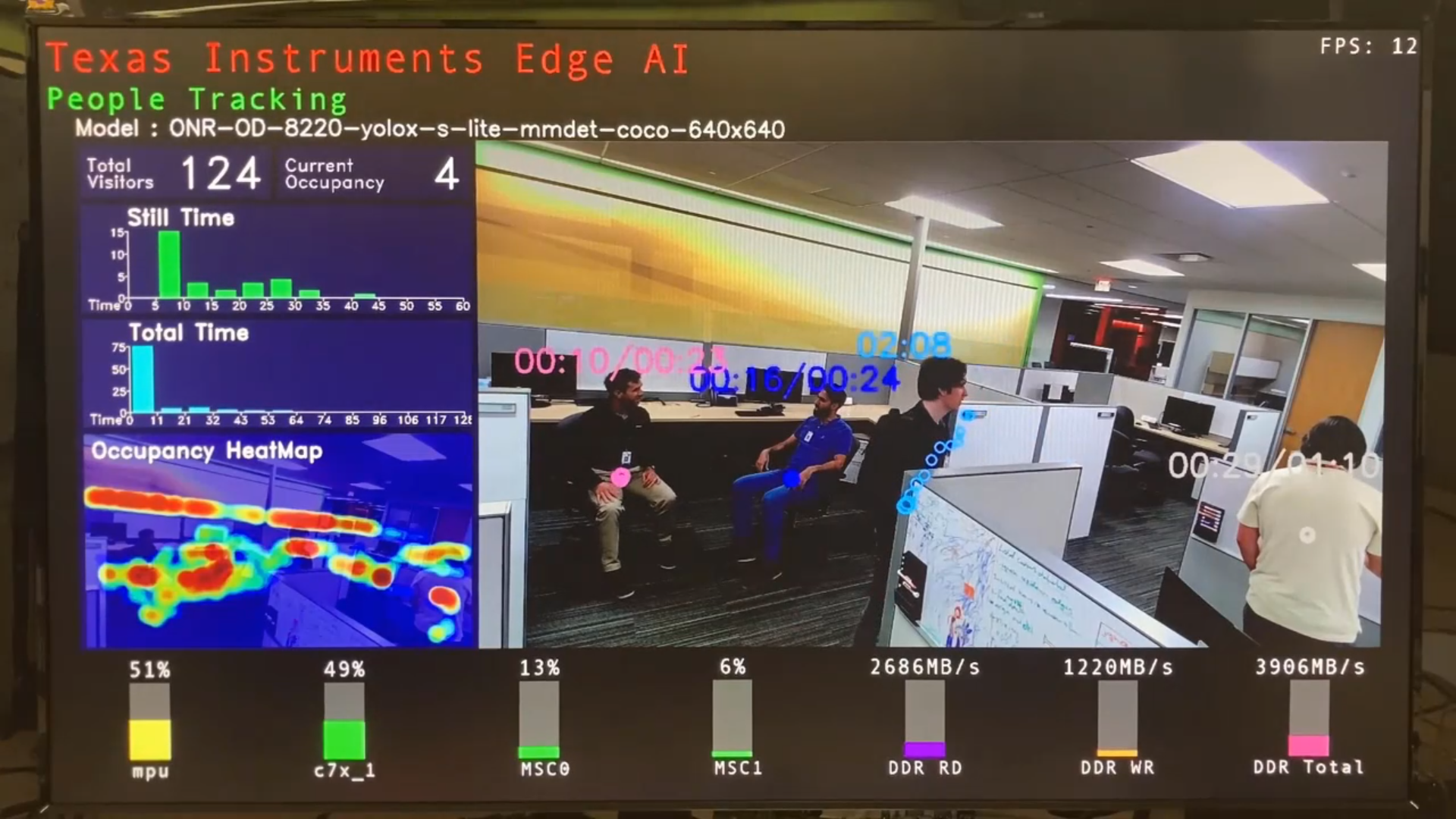Real-Time Object Detection Application

Real-Time Object Detection Application Example
Audio-Visual Conference

Audio-Visual Conference Example
Barcode Reader

Barcode Reader Example
Smart Store Checkout Scanner

Smart Store Checkout Scanner Example
People Tracking

People Tracking Example

